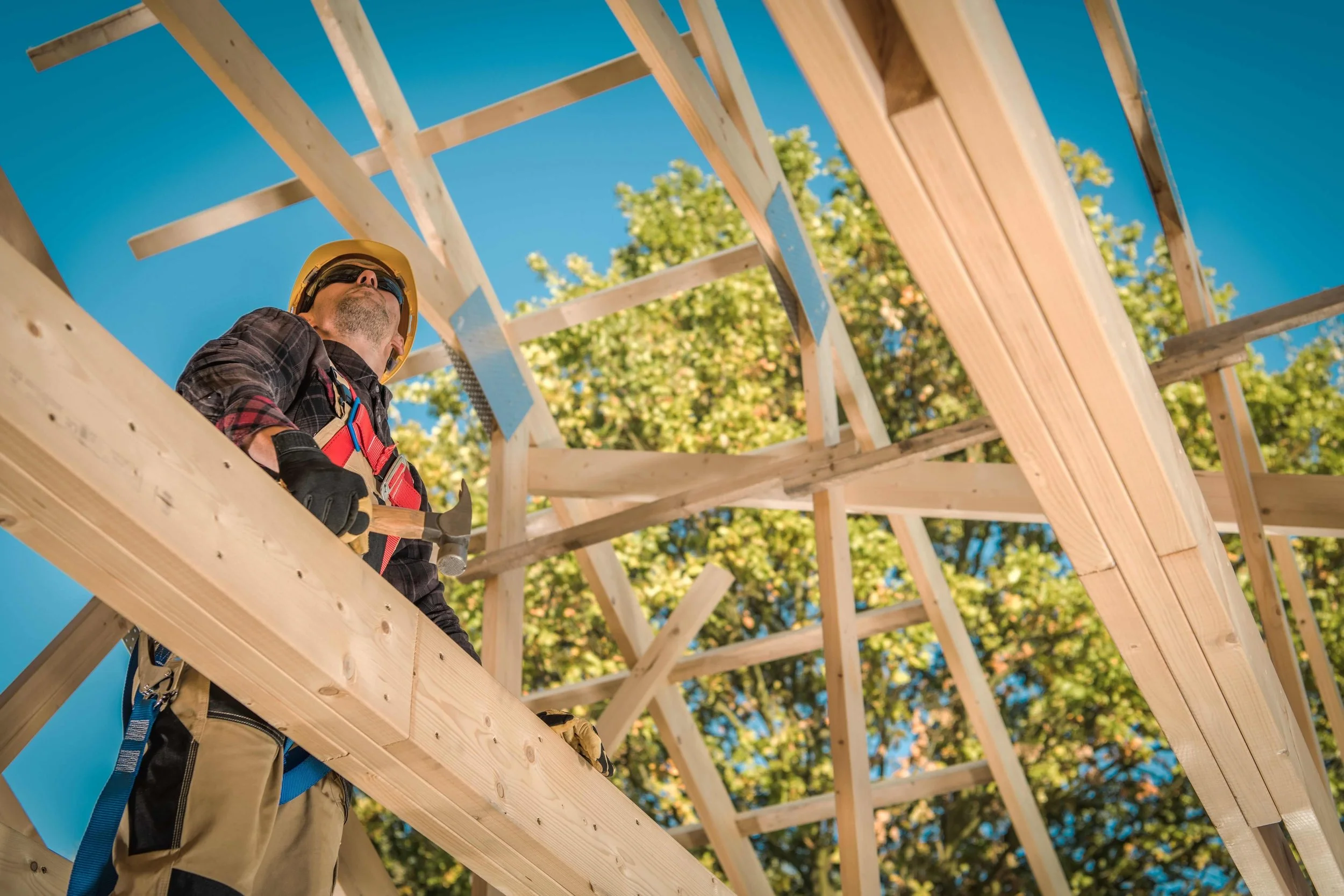What You Need to Know When Building an ADU on Your Property in Los Angeles
In Los Angeles, space is a premium commodity. As the city grows denser, homeowners are looking for innovative ways to maximize their property's potential. One such solution is the Accessory Dwelling Unit (ADU), a secondary housing unit on a single-family residential lot. Whether it's for accommodating family members, renting out for additional income, or simply increasing the value of their property, the interest in ADUs has surged. However, the process of building an ADU in Los Angeles involves navigating a complex web of regulations and considerations. Whether you're questioning, "Can I build an ADU on my property?" or are already in the planning stages of building an ADU, this comprehensive guide aims to navigate you through the essentials of ADU construction in Los Angeles, California.
What is an ADU?
Before diving into the specifics, it's crucial to understand what an ADU is. An Accessory Dwelling Unit is a secondary housing unit on a single-family residential lot. It can take various forms, such as a detached cottage, a converted garage, or a basement suite. ADUs are designed to provide independent living facilities, including sleeping, cooking, and sanitation areas, separate from the primary residence.
Can I Build an ADU on My Property in Los Angeles?
The short answer is yes, but with conditions. In California, and more specifically in Los Angeles, regulations have been crafted to encourage the construction of ADUs to address housing shortages. However, your property must meet specific zoning and lot size requirements. Generally, if your lot is zoned for residential use and has adequate space for an additional unit while adhering to local building codes, you can build an ADU. It's essential to consult with the Los Angeles Department of Building and Safety (LADBS) for the specific requirements applicable to your property.
Understanding Local Laws and Regulations
California state law provides a framework for ADU construction, but local jurisdictions, including Los Angeles, have the authority to adopt ordinances that may modify these state regulations. Here are key points to consider:
Zoning: Most residential zones in Los Angeles allow for ADU construction, but it's crucial to check your specific zoning restrictions.
Size and Setbacks: The size of an ADU in Los Angeles is typically limited to 1,200 square feet or 50% of the primary residence's size, whichever is less. Setback requirements vary but generally include a 4-foot setback from rear and side property lines for detached ADUs.
Parking: While state law exempts ADUs from parking requirements if they are located within a half-mile radius of public transit, local nuances may apply. Always verify with LADBS.
Owner Occupancy: As of recent legislation, the requirement for owner occupancy in one of the units (primary or ADU) has been relaxed until January 1, 2025, offering greater flexibility to property owners.
Planning and Designing Your ADU
When planning your ADU, consider its intended use, whether for family, rental income, or as a home office. Design considerations should include privacy, access, and maximizing space efficiency. Engaging with a professional experienced in ADU projects can help navigate these considerations and ensure compliance with all regulations.
State Legislation
California has passed several laws aimed at simplifying the ADU construction process. Notably, Assembly Bills 68 and 881 and Senate Bill 9 have reduced barriers, streamlined the approval process, and, in many cases, eliminated the need for additional parking spaces for ADUs.
Local Ordinances in Los Angeles
While state laws provide a framework, local ordinances in Los Angeles offer specifics. For instance, the City of Los Angeles has its ADU ordinance that aligns with state laws but includes additional provisions tailored to local needs. It's crucial to consult the Los Angeles Department of Building and Safety (LADBS) for the most current regulations.
Building an ADU: The Construction Process
Building an ADU involves several stages, from design and permitting to construction and final inspection. Here's a simplified overview:
Pre-Design Consultation: Engage with a structural engineering or construction firm specializing in ADUs to assess your property's suitability and discuss your objectives.
Design and Plans: Develop detailed plans that comply with local codes and submit them to LADBS for approval.
Permitting: Upon approval of your plans, obtain the necessary building permits to start construction.
Construction: Work with your chosen contractor to bring your ADU to life, ensuring that all work adheres to approved plans and local building codes.
Inspection and Completion: Final inspections by LADBS are required to ensure the ADU meets all safety and building standards before it can be occupied.
Financing Your ADU Project
Financing an ADU can be achieved through various means, including home equity loans, personal savings, or specialized loan programs for ADU construction. It's important to budget for all aspects of the project, including design, permitting, construction, and any unforeseen costs.
Building an ADU on Your Property? Contact The Sterling Watson Collective for Assistance
Building an ADU in Los Angeles offers a unique opportunity to address housing needs, generate rental income, or expand living space. By understanding the local laws, engaging with the right professionals, and planning meticulously, you can navigate the ADU construction process successfully. At The Sterling Watson Collective, we're here to guide you every step of the way, ensuring your ADU project is a resounding success.
Here at The Sterling Watson Collective, we understand the intricacies of ADU construction in California, particularly in Los Angeles. Our team of experienced structural engineers and construction professionals is dedicated to transforming your ADU vision into reality. Specializing in navigating the complex regulatory landscape of ADU construction, we ensure that your project is executed seamlessly, from initial design to final inspection.
For those living in and around Los Angeles considering building an ADU on their property, The Sterling Watson Collective is your go-to partner. We pride ourselves on delivering high-quality, compliant, and aesthetically pleasing ADUs tailored to meet your needs. Contact us today to get started or to learn more about our services. Let us help you enhance your property's value and functionality with a bespoke ADU.
FAQs
-
The first step is to verify your property's zoning and ensure it meets the requirements for ADU development. Consult with the Los Angeles Department of Building and Safety (LADBS) or a professional ADU consultant to understand your property's eligibility.
-
Permitting times can vary, but generally, it takes several weeks to a few months to obtain all necessary permits for an ADU, depending on the complexity of the project and the current workload of the LADBS.
-
Yes, converting a garage into an ADU is a popular option in Los Angeles, provided your project complies with local building codes and zoning ordinances.
-
There are no restrictions on who can live in an ADU; they can be rented to anyone and are not limited to family members, unlike junior ADUs.
-
Property owners in Los Angeles can build one detached ADU and one junior ADU (JADU) on their property, subject to meeting the local zoning and size requirements.
-
The cost to build an ADU in Los Angeles varies widely based on size, design, and finishes, ranging from tens of thousands to several hundred thousand dollars. Consulting with our team can provide you with a more accurate estimate based on your specific project.
-
Building an ADU can increase your property value and, subsequently, your property taxes, but it is typically assessed separately from your main residence, adding only the value of the ADU to your tax bill.
-
ADUs require access to water, electricity, sewer, and gas (if applicable), which may involve upgrading your existing utilities to accommodate the additional load.
-
No, ADUs cannot be sold independently of the primary residence. They are considered an integral part of the property they are built on.


